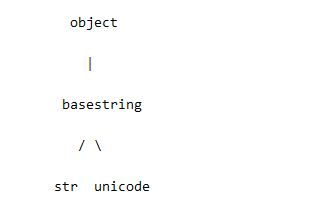围绕一门语言,学习它的文化精髓,能让你成为一名更优秀的程序员。如果你还没读过Python之禅(Zen of Python) ,那么打开Python的命令提示符输入import this,列表中的每一项你都可以在这里找到相对应的例子。
吸引我注意力的一条是:
优雅胜于丑陋 (Beautiful is better than ugly)
看下面例子:
一个带有数字参数的list函数其功能是返回参数中的奇数可以分开写:
|
1
2
3
4
5
6
|
#----------------------------------------------------------------------- halve_evens_only = lambda nums: map(lambda i: i/2,\ filter(lambda i: not i%2, nums)) #-----------------------------------------------------------------------def halve_evens_only(nums): return [i/2 for i in nums if not i % 2] |
记住Python中那些非常简单的事
两个变量的交换:
|
1
|
a, b = b, a |
参数在切片操作中的步骤,如:
|
1
2
3
|
a = [1,2,3,4,5]>>> a[::2] # 以步长为2的增量迭代整个list对象[1,3,5] |
一个特殊的例子 `x[::-1]`用来反转x的实用语法。
|
1
2
|
>>> a[::-1] [5,4,3,2,1] |
不要用可变对象作为默认参数值(Don't use mutable as defaults)
|
1
2
3
4
|
def function(x, l=[]): # 不要这么干def function(x, l=None): # 更好的一种方式 if l is None: l = [] |
使用iteritems而不是items
iteriterms 使用的是 generators,所以当迭代很大的序列是此方法更好
|
1
2
3
4
5
|
d = {1: "1", 2: "2", 3: "3"} for key, val in d.items() # 调用items()后会构建一个完整的list对象 for key, val in d.iteritems() # 只有在迭代时每请求一次才生成一个值 |
此情景和range与xrange的关系相似。
使用isinstance 而不是type
不要这样做:
|
1
2
3
|
if type(s) == type(""): ...if type(seq) == list or \ type(seq) == tuple: ... |
应该是这样:
|
1
2
|
if isinstance(s, basestring): ...if isinstance(seq, (list, tuple)): ... |
至于为什么这样做,看这里:http://stackoverflow.com/a/1549854/504262
需要注意的是这里使用basestring而不是str是因为你可能会用一个unicode对象去检查是否为string,例如:
|
1
2
3
4
5
|
>>> a=u'aaaa'>>> print isinstance(a, basestring)True>>> print isinstance(a, str)False |
因为在Python中3.0以下的版本存在两种字符串类型str和unicode

学习各种集合(learn the various collections)
python有各种各样的容器数据类型,在特定情况下选择python内建的容器如:list和dict。通常更多像如下方式使用:
|
1
2
3
4
5
6
|
freqs = {}for c in "abracadabra": try: freqs[c] += 1 except: freqs[c] = 1 |
一种更好的方案如下:
|
1
2
3
|
freqs = {} for c in "abracadabra": freqs[c] = freqs.get(c, 0) + 1 |
一种更好的选择 collection类型defautdict:
|
1
2
3
4
|
from collections import defaultdictfreqs = defaultdict(int) for c in "abracadabra": freqs[c] += 1 |
其它集合
|
1
2
3
4
5
|
namedtuple() # 用指定的域创建元组子类的工厂函数deque # 类似list的容器,快速追加以及删除在序列的两端Counter # 统计哈希表的dict子类OrderedDict # 记录实体添加顺序的dict子类defaultdict # 调用工厂方法为key提供缺省值的dict子类 |
当创建类时Python的魔术方法:
|
1
2
3
4
5
6
|
__eq__(self, other) # 定义相等操作的行为, ==.__ne__(self, other) # 定义不相等操作的行为, !=.__lt__(self, other) #定义小于操作的行为, <.__gt__(self, other) #定义不大于操作的行为, >.__le__(self, other) #定义小于等于操作的行为, <=.__ge__(self, other) #定义大于等于操作的行为, >=. |
条件赋值
|
1
|
x = 3 if (y == 1) else 2 |
表达式请起来恰恰像:如果y等于1就把3赋值给x,否则把2赋值给x,当然同样可以使用链式条件赋值如果你还有更复杂的条件的话。
|
1
|
x = 3 if (y == 1) else 2 if (y == -1) else 1 |
然而到了某个特定的点,它就有点儿过分了。
记住,你可以在任何表达式中使用if-else例如:
|
1
|
(func1 if y == 1 else func2)(arg1, arg2) |
func1将被调用如果y等于1的话,反之func2被调用。两种情况下,arg1和arg2两个参数都将附带在相应的函数中。
类似地,下面这个表达式同样是正确的
|
1
|
x = (class1 if y == 1 else class2)(arg1, arg2) |
class1和class2是两个类
在有必要的时侯使用Ellipsis
创建类时,你可以使用__getitem__,让你的类像字典一个工作,拿下面这个类举例来说:
|
1
2
3
4
5
6
7
8
|
class MyClass(object): def __init__(self, a, b, c, d): self.a, self.b, self.c, self.d = a, b, c, d def __getitem__(self, item): return getattr(self, item) x = MyClass(10, 12, 22, 14) |
因为有了__getitem__,你就能够通过对象x的x[‘a']获取a的值,这应该是公认的事实。
这个对象通常用于继承Python的切片(slicing) (http://docs.python.org/library/stdtypes.html#bltin-ellipsis-object),如果添加如下语句:
|
1
2
3
4
5
|
def __getitem__(self, item): if item is Ellipsis: return [self.a, self.b, self.c, self.d] else: return getattr(self, item) |
我们就可以使用x[…]获取的包含所有项的序列
|
1
2
3
|
>>> x = MyClass(11, 34, 23, 12)>>> x[...][11, 34, 23, 12] |












